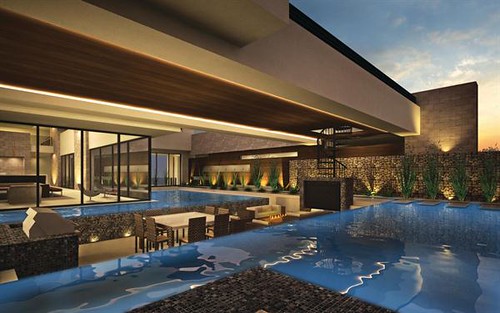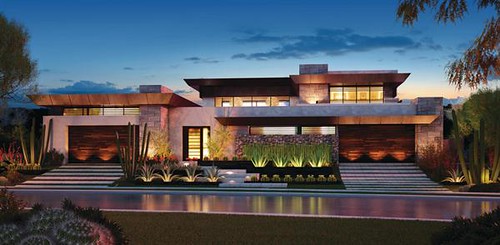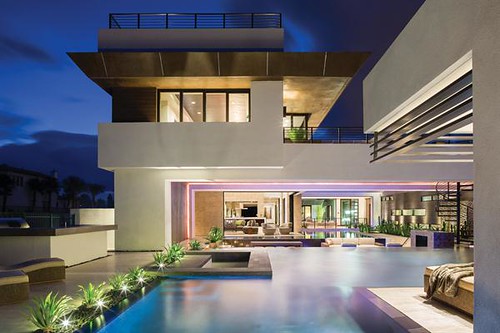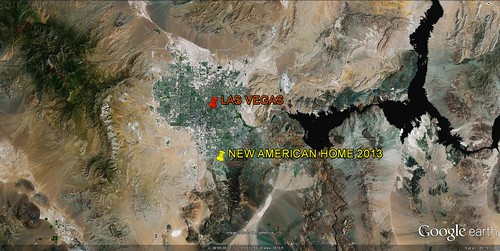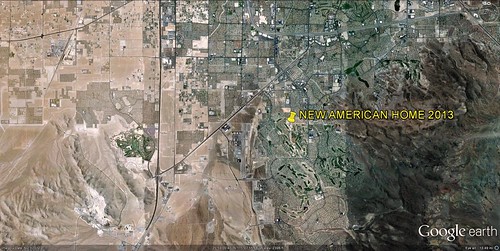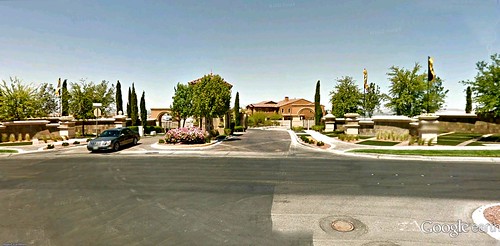As good and important as it is, LEED can be so embarrassing

Posted January 18, 2013 at 2:02PM
As most readers are likely to know, “LEED” (Leadership in Energy and Environmental Design) is a voluntary set of standards for judging and certifying green buildings. It was developed by the US Green Building Council, a consortium of industry (there are still formal requirements that certain segments of the building industry sit on the board) and environmental interests.
The system is based on builder-applicants both meeting certain requirements (“prerequisites”) and earning a minimum number of points from a menu of optional building components or performance achievements (“credits”). Depending on the number of credits achieved, a qualified applicant may earn a rating and certification at one of four levels (certified, silver, gold, or platinum). More than 7000 buildings have been certified through LEED, a slim majority of them reportedly located outside the US.
A number of my NRDC colleagues and partners have participated in the US Green Building Council and in volunteer committees related to LEED since its inception in 1998. My former colleague Rob Watson, LEED’s founding chairman, devoted so much time to the development of the system that he became known as “the father of LEED.” I devoted a huge chunk of my own time to developing a sort of sequel called LEED for Neighborhood Development, a partnership attempt to create standards that could define and encourage smart growth projects in the same way that the original LEED had defined and encouraged green buildings.
It’s not much of a stretch to say that, more than any other single force, LEED has put green buildings on the map and institutionalized building performance measures shown to reduce resource consumption and pollution. A lot of wood, water, and energy has been saved, a lot of pollution has been avoided, and a lot of conditions protective of public health have been adopted because of LEED and because of the hard work of USGBC and their volunteers.
Warts in the system
But, man, there are a lot of warts in this system. For starters, LEED has been criticized for being insufficiently demanding of its applicants. I believe that, to the extent this criticism is well-placed, it stems from a belief held by many involved with the Green Building Council, some of them representatives of the building industry, that the standards should be set only a little bit above what industry is likely to do anyway. The theory is that applicants will be more likely to adopt green measures if they perceive them to be well within their reach by aiming just a little bit higher; otherwise, the feeling goes, they won’t bother and there will be no environmental benefit.
Another problem may be that USGBC, although a non-profit, operates as a business and needs revenues to keep the system going; if difficulties in the standards or the process of application are too demanding, fewer potential applicants will be willing to pay the costs of documentation and formal review.
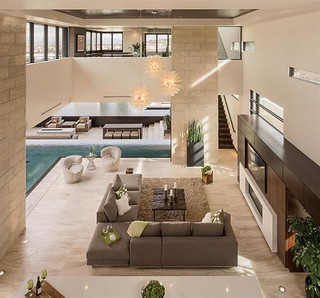 A third charge leveled at the system is that LEED has become pro forma, more about earning points than achieving actual environmental performance. The two are not unrelated, of course, but there is a belief that applicants and their consultants “game the system” by going after low-hanging fruit to rack up a good score, even if the underlying measure doesn’t result in a significant environmental improvement. I worked in a building that, when applying for a LEED-gold certification, simply turned off its water fountains, presumably in a strategy to grab another water efficiency credit point. The result was that the building probably did use less water, but at the cost of reducing workers’ access to drinking water.
A third charge leveled at the system is that LEED has become pro forma, more about earning points than achieving actual environmental performance. The two are not unrelated, of course, but there is a belief that applicants and their consultants “game the system” by going after low-hanging fruit to rack up a good score, even if the underlying measure doesn’t result in a significant environmental improvement. I worked in a building that, when applying for a LEED-gold certification, simply turned off its water fountains, presumably in a strategy to grab another water efficiency credit point. The result was that the building probably did use less water, but at the cost of reducing workers’ access to drinking water.
LEED also gives a point for installing an outdoor bike rack, which few seasoned cyclists in urban situations would risk using, but not for actually giving employees bikes or heavy-duty locks, which might be more effective in encouraging cycling. LEED even gives a credit point for itself; an applicant who employs a LEED “accredited professional” will score higher than one that does not, even if the applicant’s building is identical to one whose sponsor lacks accreditation.
“The new face of efficiency”
I recount this long-winded intro because my friend Lloyd Alter of the environmental website Treehugger has just written a terrific story about a new, supposedly super-green house being touted as “the new face of efficiency” even though it’s really a gigantic luxury house placed in a location where residents have no choice but to drive long distances to do anything. This is ultra-green? Sadly, LEED seems to think so.
In particular, did you know that this latest LEED-Platinum home – the highest rating bestowed by the Green Building Council, in theory only for the very greenest of green buildings – is nearly three times the size of the average new American home? Would you be surprised to learn that it sits on a lot occupying two-thirds of an acre, consuming nearly twice as much land as the average new-home lot in a US metro area? How about that it is located in a “gated community” on the far outskirts of Las Vegas, 1.2 miles to the nearest transit stop? Or that its Walk Score is a miserable 38 out of a possible 100 points?
The building in question is the latest in a series of showcase homes featured by The National Association of Home Builders every year during its annual trade show. It’s called “The New American Home” and the idea is to celebrate and publicize the state of the art in American homebuilding. This one has 6,721 square feet of floor space, nine bathrooms (but only three bedrooms, plus a home office and library), and extensive “water features.” The house also includes 17,261 square feet of "outdoor living space." (The average size of a newly completed American, single-family home in 2011 was 2480 square feet.)
It is one of 33 "estate homes" planned for the exclusive Marquis Seven Hills community, itself a component of the master-planned Seven Hills development being built by Blue Heron Homes in Henderson, Nevada. The marketing tag for the Marquis enclave is "luxury without limits."
I’ll grant that The New American Home 2013 is loaded with green bells and whistles. An article titled “The New Face of Efficiency” and posted on NAHB’s BuilderOnline website earlier this week lists over fifty of them, including the use of certified wood, solar panels, energy-efficient lighting, and a carbon monoxide alarm monitor. “Overall, the home uses approximately 67 percent less energy for heating and 83 percent less energy for cooling compared to a similar home in the same climate zone,” says the article. (Put a bit more candidly, the building uses that much less energy for heating and cooling than your run-of-the-mill 6,721-square-foot home in a desert climate where the average high temperature in July is 104 degrees.)
The house has, according to the article, received an “emerald” certification from NAHB’s National Green Building Standard and, as noted, a platinum certification under the branch of LEED called LEED for Homes.
To my eyes, the new American home is spectacular and beautiful. I love the architecture and think all the water features would be soothing (and certainly a contrast from the building’s dry, desert surroundings; Henderson, the exurb of Las Vegas where Marquis Seven Hills is located, receives a mere four and a half inches of water per year). The photos look wonderful.
But is it worthy of being certified LEED-platinum, the greenest of the green? Maybe not, if you consider its outlandish size and challenging climate setting.
Environmental building performance is determined by location
And certainly not, if you consider the location. Contrary to myth, the environmental performance of a building is not determined just by what happens inside the building. Research shows, for example, that Americans generally consume more energy – and emit more carbon dioxide – getting to and from a typical building than does the building itself. Research also shows that location and neighborhood factors can create a dramatic difference in how much energy is consumed and emissions are generated in the getting to and fro.
Additional research also shows that even ordinary households in transit-oriented locations save more energy and emissions than “green” households in sprawl, across several housing types. In other words, a home with no green technology, if in the right place, is actually greener than a house with every bell and whistle imaginable, even if the latter gets a platinum rating.
In the case of the New American Home 2013, as noted, the Walk Score is 38. That’s poor even by the standards of notoriously sprawling Henderson, Nevada. Walk Score reports that 77 percent of Henderson residents have a higher rating. Las Vegas as a whole has an average Walk Score of 49. (Walk Score is a rough measure of how easily one might be able to get around from a given location to typical daily functions such as food stores, schools, parks, and restaurants without a car or with minimal driving.)
A typical household in the Seven Hills development where this year’s New American Home is located drives 20,053 miles per year and emits more than 8.6 tons of carbon dioxide per year from household auto use for transportation. This is mediocre environmental performance at best, more driving and emissions than even an average household in the Las Vegas-Henderson metro region, as well as more than the average American household nationally.
 All this means that a household living in the New American Home, all things considered, is as likely to be brown as green in its environmental performance if the measure of that performance is determined by a full accounting of the home’s characteristics, no matter how many efficiency gizmos are built into it.
All this means that a household living in the New American Home, all things considered, is as likely to be brown as green in its environmental performance if the measure of that performance is determined by a full accounting of the home’s characteristics, no matter how many efficiency gizmos are built into it.
Just to be clear, I don’t really fault the Homebuilders for showcasing conspicuous consumption far beyond most Americans’ wildest dreams, even if it remains a time of persistent unemployment and struggling household debt. The purpose of the New American Home is to be impressive and attention-grabbing while showing off building techniques and state-of-the-art products, not to show where someone attempting a restrained green lifestyle would be likely to live. I think the home is impressive. While I personally wouldn’t prefer living in a relatively isolated gated community, I do like the way the house looks and would probably enjoy visiting if I knew someone who lived there.
Why a Platinum rating
But I do hold the LEED standards accountable for bestowing the system’s highest rating on a building that not only isn’t likely the best of the best in total green performance but may not even be average, considering its size, land consumption, climate conditions, and especially its transportation characteristics. LEED does a lot of good; but, unfortunately, at its worst the system doesn’t really measure how green something really is but how many credit points it can check off for having compliant technology.
The US Green Building Council is a fantastic organization of talented and dedicated people. Those inclined to defend a platinum rating for an ostentatious house in sprawl would likely respond with a theory of “market transformation”: a system of forgiving incentives placed in a certification program for implementing green technology gradually transforms the market precisely because the standards are not too difficult to achieve; as a result, more builders will employ green measures than they otherwise would, conserving resources and reducing pollution, regardless of what might be considered truly green.
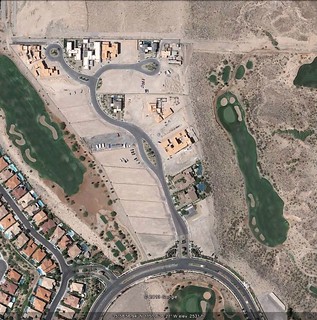 In other words, since we can’t stop peopIe from building trophy houses in the desert even if we wanted to, we should at least encourage them to build those trophy houses a little better: if you’re determined to build a house almost three times bigger than the average American house, in a gated luxury subdivision where you have to drive long distances to do anything, it’s better to do so with green technology than not.
In other words, since we can’t stop peopIe from building trophy houses in the desert even if we wanted to, we should at least encourage them to build those trophy houses a little better: if you’re determined to build a house almost three times bigger than the average American house, in a gated luxury subdivision where you have to drive long distances to do anything, it’s better to do so with green technology than not.
But, come on, platinum? The Seven Hills development wouldn’t come close to qualifying for a certification under LEED for Neighborhood Development, which takes location and neighborhood design into account as well as building technology. LEED-ND includes a prerequisite that a development applying for a rating, even at the lowest level, include certified green buildings. As a leader of the environmental groups involved in constructing that system, I supported that prerequisite. I wanted us to create a system that defined and encouraged smart growth; it’s my belief that, in this day and age, smart growth isn’t really smart unless it includes green buildings.
But why shouldn’t that work in both directions? Why should a building be considered green if its location is brown? Or, at the very least, why should a building qualify for the highest, platinum rating – signifying the greenest of all green buildings – if it is completely dependent on long automobile trips that will collectively emit more carbon than the building’s efficient heating and cooling systems will save? Maybe ten years ago, the green building movement was so new that it would have been counterproductive to have high standards. But we should be better than that now.
Related posts:
- A fiscal conservative's manifesto against sprawl (September 18, 2012)
- Guess what DOESN'T stay in Vegas: sprawl (March 9, 2012)
- Re-calibrating green building certification in two cartoons (June 23, 2011)
- The collapse of the "key assumptions" of sprawl (April 25, 2011)
- What does 'net zero' mean? Sprawl by another name? (August 19, 2010)
- Using LEED-ND to identify good locations for smart, green development (July 27, 2010)
- Living in a fool’s paradise (“the greenest mansion in America”) (April 1, 2010)
- LEED awards show why ‘green’ criteria need reform (January 11, 2010)
- Terrific post by Jacobean on LEED and sprawl (April 8, 2009)
Move your cursor over the images for credit information.
